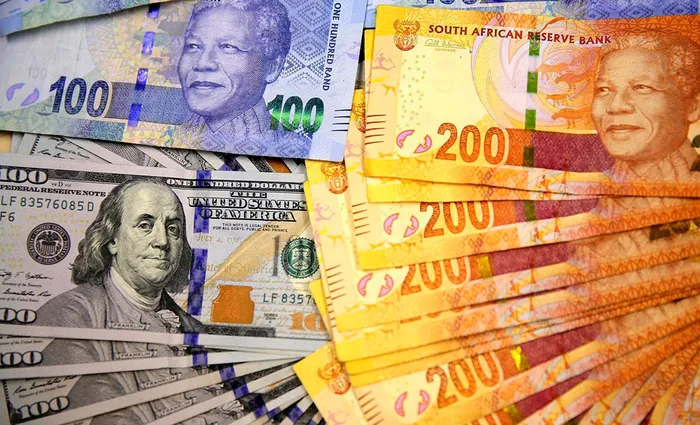Rand moves towards R18 to dollar amid market uncertainty

South African bank notes.
Image: Reuters
The rand moved back towards R18.00 to the dollar on Monday as investors remain on edge ahead of the August 1 American tariff deadlines.
At 4.50pm the local currency was at R17.73 to the dollar.
The rand has seen increased volatility since July 14, when President Donald Trump announced a 30% tariff on US imports of South African goods to start on August 1, according to Trading Economics. South Africa is facing an extra tariff threat from the US as a member of BRICS.
Annabel Bishop, the chief economist at Investec, said the rand continues to be led by the US dollar’s movements in the rand-dollar cross, weaker by 1.8% this month, but flat against the euro and the UK pound, with markets seeing some uncertainty on the approach of August 1st US tariff deadline.
The US dollar has been gaining since the start of the month, with an uptick in risk aversion on concerns over the erratic nature of the US administration’s tariff and foreign policy, leading to some worries over US and global growth again, she said.
Bishop noted the rand has averaged R17.76 to the dollar this quarter so far, after R18.30 to the dollar in quarter two 2025, and R18.50 to the dollar in quarter one, with the domestic currency nearing R18.00 to the dollar last week on dollar strength and concern over incoming tariffs on August 1.
She said uncertainty has a negative effect on financial markets, and the recent rise in the US dollar reflects some safe haven investing as sentiment has deteriorated somewhat, while markets also worry about Federal Reserve Chair Jerome Powelll leaving early from the US Central Bank. In particular, US President Trump has been threatening to fire Powell, particularly due to the Federal Open Market Committee’s reticence in cutting interest rates in the US this year, with Trump having reportedly already drafted the letter.
Powell’s term ends in just under a year time, and US Treasury Secretary Bessent has instead supported Powell’s exit only at the end of his term (specifically May 2026), in order to cause the least disruption to financial markets.
Bishop said in South Africa, the incoming tariff threat has not been fully factored into the rand exchange yet, both from an economic perspective and from a sentiment issue, with the rand not having seen depreciation on its own this month.
Meanwhile, South African Reserve Bank Governor Lesetja Kganyago cautioned that a weaker dollar due to Trump's tariffs and deflationary pressures in China are adding uncertainty to the local inflation outlook. He also warned that if implemented, tariffs are likely to pressure the agricultural and automotive industries, with negative implications for the broader economy, according to Trading Economics.
The market is keeping an eye out for June consumer price inflation rate on Wednesday. Waldo Krugell, a Professor of Economics, North-West University, Potchefstroom, said economists expect inflation to have accelerated a bit from 2.8% in April and May to 3% in June. The main contributor to the upward pressure is slightly higher food prices, while the annual decline in fuel prices will exert downward pressure. Even with inflation drifting higher in the second part of the year, it is not expected to reach the mid-point of the target band at 4.5%.
Economists are split ahead of South Africa’s July 31 rate decision, with some anticipating another cut due to persistently low inflation, while others advocate a pause.
The all share index closed the day 0.98% up at 99 654 points.
BUSINESS REPORT